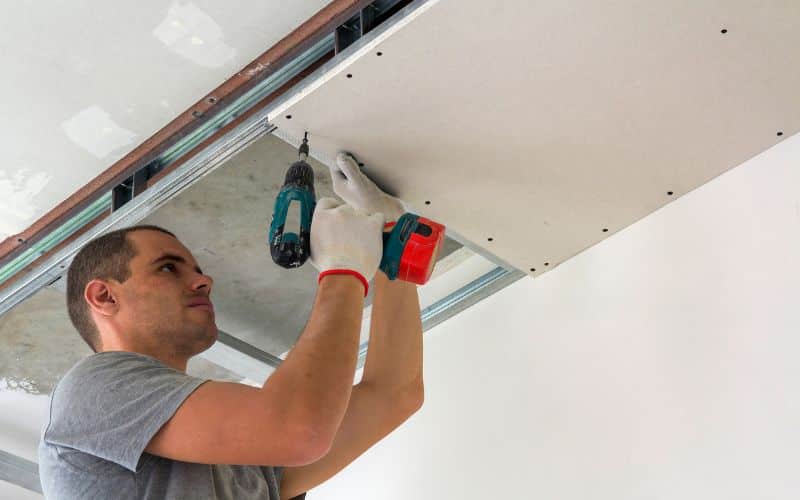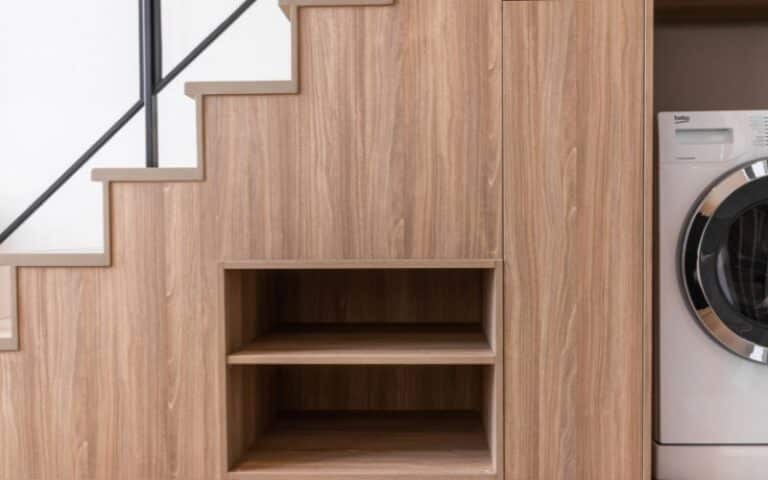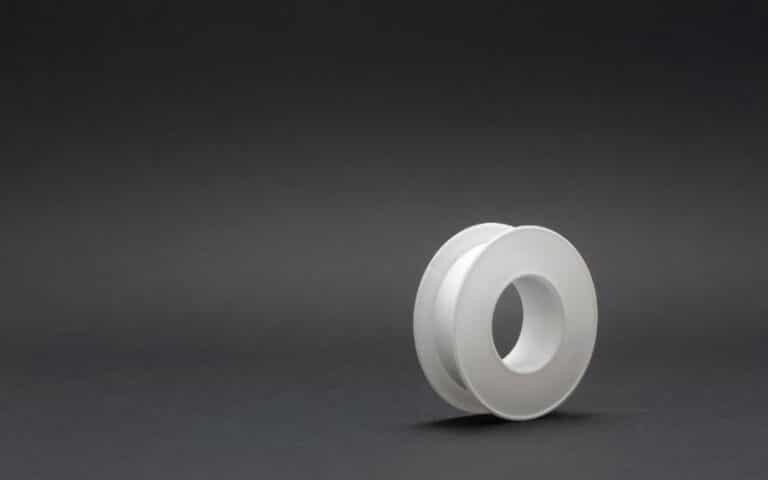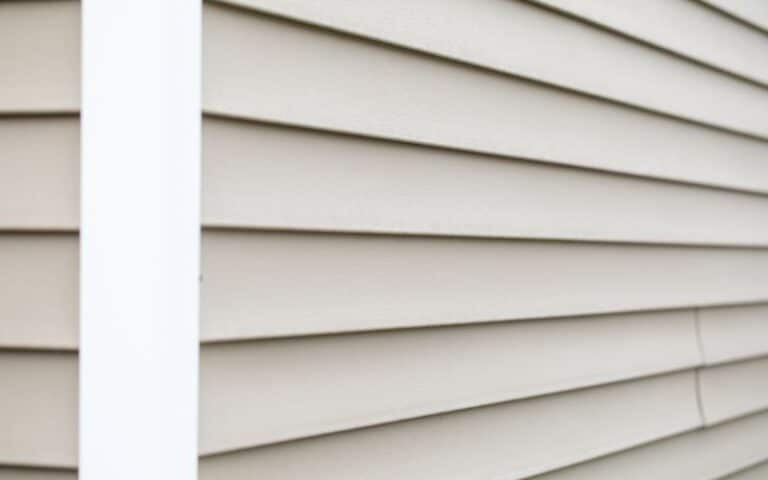Drywall, or wallboard, is a popular sheet of finishing materials used for interior walls and roofs in houses and buildings.
Aside from that, you can use it to hang or remove items such as shelves, pictures, and other adornments using screws.
However, these screws can leave unsightly holes that can damage the beauty of the wall. But can you repair these holes for reuse?
It is possible to repair screw holes in drywall for reuse. The process is straightforward, and you can quickly achieve a perfect result with simple tools and materials. However, the success of your screw hole repair depends on various factors, such as the number of holes, the hole size, and the drywall’s condition.
This article explains the step-by-step processes involved in repairing a screw hole for reuse, what to avoid, and what factors to consider before reusing a screw.
At the end of this article, you can make the best choice when fixing your screw hole.
Ready for a Drywall Quiz?
Can I Repair Screw Holes in the Drywall for Reuse?

Yes, you can repair and reuse the screw holes in the drywall. You only need to use the perfect material and tools.
When repairing the screw holes, there are some steps you need to follow for a perfect result.
Step 1: Clean the Holes
The first step before repairing the screw holes is to clean dust or debris that can surround the screw. A dry brush or clean clothes will do the job perfectly.
Step 2: Fill the Holes
After cleaning, filling the screw holes with the spackling compound is best. You can do this using a putty knife. It’s best to ensure you fill the holes.
Then you can smoothen the surface of the compound with the knife.
Step 3: Leave to Dry
The next step is to leave the compound to dry. The drying process varies as regards the temperature and humidity of the room.
While it dries out within a few hours, it can take overnight before it dries out.
Step 4: Smoothen the Surface
When the sparkling compound is dry, use fine-grit sandpaper to sand the surface til the surface becomes smooth.
After sanding, you can use a clean cloth or dry brush to dust off any dirt.
Step 5: Reuse the Holes
After carrying out all these steps, if the repaired hole is small and the surrounding drywall is in good condition, it’s safe to reuse the holes.
However, suppose the holes are wider or the surrounding drywall condition is bad. In that case, using a new hole for the screw is safer.
When going with the screw, it’s best to use the perfect size of screw that fits the hole and avoid over-tightening the screw since this can damage the drywall.
Therefore it is best to use a screwdriver rather than a drill.
How Do You Fix Old Screw Holes in Drywall for Reuse?
There are various methods to fix an old screw hole in drywall when you want to reuse them based on the severity of the hole.
Here are the 5 methods you can use;
#1. Using a Wall Anchor
If the old screw hole was for a screw driven directly into the wall, using a drywall anchor is best to make it stronger for reuse. So how do you fix the drywall anchor?
It’s simple! All you need to do is use a hammer to fix a plastic anchor into the wall.
However, before you fix a drywall anchor, it’s best to consider the following.
- You must test and confirm whether the anchor fits well in the drywall.
- Once you can use a hammer to drive an anchor into the holes, the anchor will make the hole suitable for reuse.
If the old hole is too small for the anchor to fit right, you can expand it with a drill. However, if the hole is too big, you can use a bolt clasp or patch the wall.
After trying to enlarge and the hole still can’t fit the anchor, try the following method.
#2. Replace the Anchor With a Toggle Bolt
Try a stronger fastener or toggle bolt if wall anchors can’t fix the hole problem. Toggle bolts are twice stronger as anchors.
They can hold up to 50 pounds without causing any damage to the drywall. Therefore when you use them in the drywall hole, they remain firm.
Installing a toggle bolt is straightforward; you must follow the instructions below.
- Fold back the spring-loaded branches alongside the leg of the bolt.
- Then place the bolt inside the hole until the branches of the bolt unfold and mount it against the back of the drywall. And remember to tighten the bolt.
- If the hole is too small for the toggle bolt, it’s best to use a drill to expand the hole to fit perfectly.
#3. Using Molly Bolts
Molly bolts are like toggle bolts and can also support up to 50 pounds per bolt, making them excellent for drywall holes you want to reuse.
However, these two bolts have their differences. Therefore it’s best to know them to choose the perfect option.
The table below contains the differences between toggle and molly bolts.
| Toggle Bolts | Molly Bolts |
|---|---|
| This bolt opens thereby creating an anchor from the other side of the drywall. | This bolt opens, creating an anchor from the other side of the drywall. |
| Toggle bolts are stronger. | Molly’s bolt is less strong compared to toggle bolts. |
| Toggle bolts are not suitable for reusing. | It’s easier to remove and reuse this fixing. |
Can I Follow the Same Steps to Get Rid of Mold in Drywall Behind Kitchen Cabinets?
Can I follow the nine steps to remove drywall mold in the kitchen cabinets? It’s crucial to act promptly when dealing with mold behind cabinets as it can spread and pose health risks. First, ensure safety measures like wearing protective clothing. Then, isolate the affected area and stop the moisture source. Remove the affected drywall, clean the surroundings, and dry thoroughly. Use a mold inhibitor before replacing the drywall and always keep the area well-ventilated.
How Do You Fix Drywall Screw Holes That Are Too Big?
If the screw holes in drywall are too big for a drywall anchor, toggle, or molly bolts to fit in, You don’t need to panic.
All you need to do is to cut out a section of drywall and patch it with new drywall. How will you do this?
It’s something easy once you adhere to the instructions.
- Measure and cut out the section of drywall about 10 to 20 cm tall.
- Then cut out ¾ inch of the wall each at the hole end. Doing so will give half studs on each end.
- Then cut a length of 2×4 to cover the space between the studs.
- Use screws to attach the 2×4 piece to each stud in a way that sits flush with the stud side closer to the drywall.
- Cut a piece of drywall to cover the opening made by the piece you screwed. Attach this drywall to the stud and the 2×4 piece using drywall pins.
- You can then repair and paint the drywall.
However, when fixing these repairs, there are some quick fixes you need to avoid.
These methods will only hold for a short time and might lead to further troubles. Some of them include;
#1. Toothpick Method
Inserting a toothpick inside a screw hole with a wooden gum is something you might end up regretting.
Wood glue and other adhesive don’t form a strong bond with the gypsum on the drywall.
As a result of the gypsum nature, the toothpick and the glue will tear out from the wall, thereby pulling out more drywall.
#2. Use of Adhesive
Any adhesive (automotive filler, construction glue, or wood glue) would not last long. The drywall does not bind excellently with adhesives.
Therefore using these fillers is just like placing a loose plug of another substance into your drywall.
You will not enjoy this repair because if you place a heavy weight on it, your wall will tear out and inflict more damage to your wall.
#3. Use of Joint Compound
As much as you would like to patch the large screw hole on your drywall with a joint compound, it’s not the best idea.
This compound is a plaster substance that crumbles easily. So using it for repairs won’t fix anything because it will neither hold a screw, anchor or bolt perfectly.
Are Drywall Screws Reusable?
Although not all drywall screws are reusable, you can reuse them in certain situations. The main factor to consider before reusing a screw is the condition of the screw.
When the drywall screw is in poor shape, such as bent, stripped, or impaired head, it’s best not to reuse it to avoid any structural issues that might result.
Also, if you do, it might lose its strength. However, if these screws are in good condition, you can reuse them in specific applications.
For example, if you remove drywall sheets for repair, you can reuse the screws in good condition.
Also, before you reuse the screws, ensure they are in the perfect length and shape with the material. Doing so will save you from any problems.






